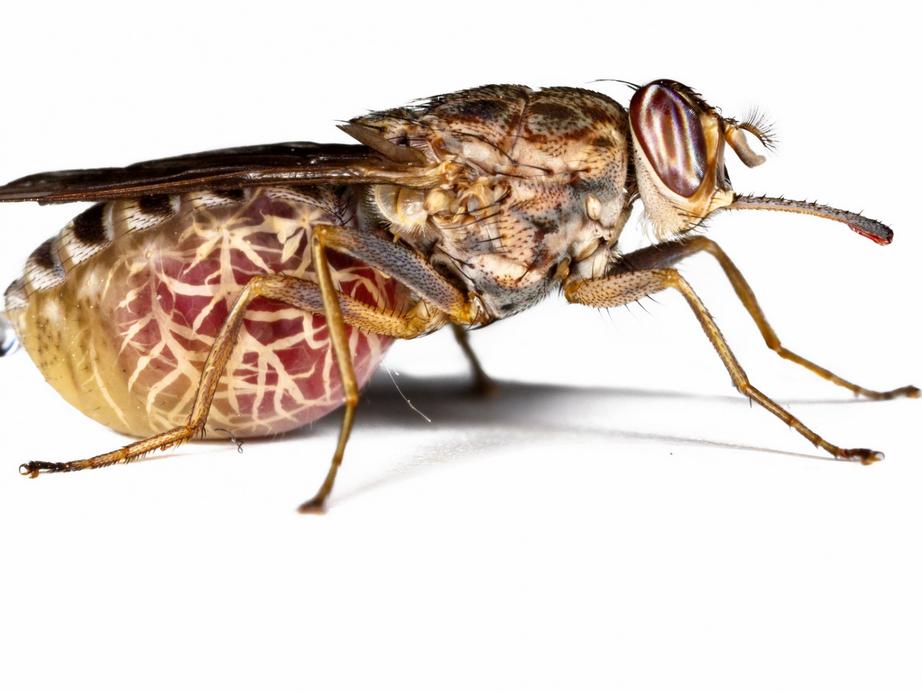Genetically modified insects could disrupt international food trade
Genetically modified organisms for pest control could end up as contaminants in agricultural products throughout the globe
“There’s a fly in my soup.” This statement conjures up the image of a dead fly in a bowl of soup rather than a genetically modified insect being served up with organic vegetables. However, this is not a totally unrealistic scenario as experimental releases of genetically modified insects have been approved by US regulators in 2014 very near farming areas. The question is whether fruit and vegetables exported from the USA to Europe and China can be sold under the “organic” label if genetically modified insects have developed on them. Guy Reeves from the Max Planck Institute for Evolutionary Biology in Plön, Germany and Martin Phillipson Dean of Law at the University of Saskatchewan, Canada, are drawing attention to this problem. In their view, clarifying statements on the part of US regulators is required to ensure that producers of organic commodities do not have to fear for their reputation.

All around the world for the last 50 years, males sterilised by transient exposure to radiation have been used to successfully control a wide range of insect species (e.g. screw worm and medfly). While these males can still mate, the resulting eggs are not viable. A new elaboration of this technique that utilises genetically modified males that only produce sons has recently been approved for open field-testing in the USA. In both approaches where sufficient males are released over several generations the size of the wild female populations will decline and the pest population will gradually be reduced or become locally extinct.
The following applications for mass open release of genetically modified insects for agricultural pest control have been submitted:
- UK 2011: withdrawn by the applicant
- Spain 2013 and 2015: withdrawn by the applicant
- USA 2005-2011: approved, releases took place at isolated location in Arizona desert
- New York State 2014-2017: approved, then withdrawn by the applicant in March 2016, in November 2016 all permit documents were withdrawn by the regulator The permit allowed for the of release genetically modified diamondback moths 72 times per year until the end of March 2017. With releases of up to 100,000 moths per week on cabbage or broccoli fields totalling 40,500 square metres.
The big advantage of releasing sterile insects is that pests can be controlled without the need to spray chemical insecticides into the environment. This is true for both the conventional irradiation approach and the new genetically modified approach. However, if the use of genetically modified insects in agriculture is to become a widespread solution for pest control, the implications stemming from the fact that genetically modified insects are intended to fly between farms needs to be adequately considered. Realistically this must be done in the context of the regulations on the presence of genetically modified contaminants in food that have developed over the past 30 years around the world.
Organic farmers at risk
The release of genetically modified insects has potential consequences for organic farmers, which are a particularly sensitive group in this respect. “There are some realistic circumstances where the mass release of flying genetically modified insects could harm organic farmers and erode consumer confidence in their products. Unfortunately, we can find little evidence of efforts to reduce this risk or even discuss the issue”, explains Reeves from the Max Planck Institute in Plön.
Using legal case studies around the world (Australia, China, Canada, EU and the USA) Reeves and Phillipson establish that any detected or conceivably perceived contamination of crops imported into countries that have not approved its presence is likely to be met with import bans, disrupting international trade. The situation for crop products internationally certified as “100 percent organic” has additional levels of complexity. These include the costs of any negative perceptions of involvement in this technology by organic consumers and the potential loss of organic certification by farms located near releases.
The article also focuses on the situation of a hypothetical certified organic spinach farmer located near a widely reported approved release of genetically modified diamondback moths in New York State (USA). Currently, there is no obligation to inform local farmers of mass releases, which makes it difficult for them to plan or mitigate risks. This is even the case within the three kilometre area indicated by a published experimental study that may be appropriate for diamondback moth control programs.
More transparency required
In addition, a letter from the European Commission Health and Consumers Directorate-General indicates that inadvertent presence of genetically modified insects imported into the EU would be unapproved and that it is the responsibility of Member States to prevent this occurring. In order for genetically modified insects to be used successfully (potentially on organic farms), it is essential that all of the affected groups be involved in the development process and have access to regularly updated information. “While the introduction of driverless cars has the potential to bring a wide range of benefits it would be misguided to introduce them without making it clear that cyclists will not be knocked over by them. Likewise releasing flying genetically modified insects without considering the likely impact on sensitive groups of farmers is unwise and unnecessary”, says Reeves.

